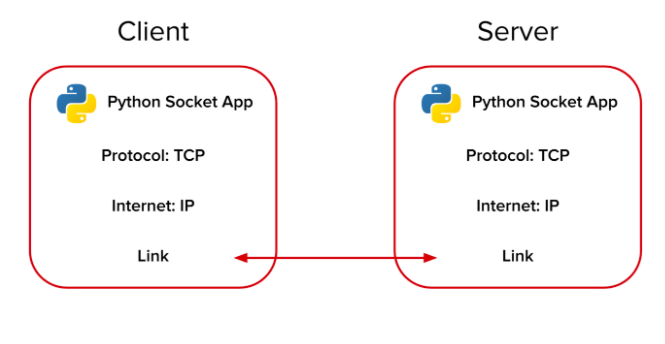A socket is an endpoint of communication between two devices. Socket programming communication is based on the client-server model.
The processes which use the socket can be on the same system or different system on different networks. Sockets are useful for both stand-alone and network applications. Sockets allow you to exchange information between processes on the same machine or across a network.
Python Socket Programming
Use socket class to create socket objects in your source code.
Socket programming is started by importing the socket library and making a simple socket.
import socketNow we can create a socket object :
s = socket.socket(socket.AF_INET, socket.SOCK_STREAM)We create a socket instance and passed two parameters. AF_INET refers to the address-family ipv4. The SOCK_STREAM means connection-oriented TCP protocol.
A simple server-client program :
Now we want to write a simple client-server program.
Server :
A server has a bind() method which binds it to a specific IP and port so that it can listen to incoming requests on that IP and port. A server has a listen() method which puts the server into listening mode. This allows the server to listen to incoming connections. And last a server has an accept() and close() method. The accept method initiates a connection with the client and the close method closes the connection with the client.
let’s create a client and server program with Python.
import socket
serv = socket.socket(socket.AF_INET, socket.SOCK_STREAM)
serv.bind(('0.0.0.0', 8080))
serv.listen(5)
print("Server running")
while True:
conn, addr = serv.accept()
clientData = conn.recv(4096)
print(clientData.decode())
conn.send("SERVER\n".encode())
conn.close()
print('client disconnected')
We create a socket object and binds it to the localhost’s port 8080 as a socket server. When clients connect to this address with a socket connection, the server listens for data, and stores it in the “clientData” variable.
Client:
Now we want to write code for the client:
import socket
client = socket.socket(socket.AF_INET, socket.SOCK_STREAM)
client.connect(('0.0.0.0', 8082))
data = "client data"
client.send(data.encode())
serverData = client.recv(4096)
client.close()
print (serverData)
The client opens a socket connection with the server and after that send a request to the server and server reply to it.
We need two terminal windows. First, run the server.py code and after that run client.py. You can see the client send a request and the server replied to it.
